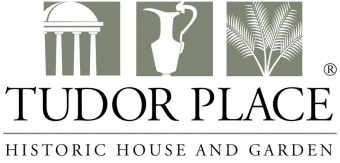- Education Topics
- Achievement Gap
- Alternative Education
- American Education Awards
- Assessment & Evaluation
- Education during COVID-19
- Education Economics
- Education Environment
- Education in the United States during COVID-19
- Education Issues
- Education Policy
- Education Psychology
- Education Scandals and Controversies
- Education Reform
- Education Theory
- Education Worldwide
- Educational Leadership
- Educational Philosophy
- Educational Research
- Educational Technology
- Federal Education Legislation
- Higher Education Worldwide
- Homeless Education
- Homeschooling in the United States
- Migrant Education
- Neglected/Deliquent Students
- Pedagogy
- Sociology of Education
- Special Needs
- National Directories
- After School Programs
- Alternative Schools
- The Arts
- At-Risk Students
- Camps
- Camp Services
- Colleges & Universities
- Counties
- Driving Schools
- Educational Businesses
- Financial Aid
- Higher Education
- International Programs
- Jewish Community Centers
- K-12 Schools
- Language Studies
- Libraries
- Organizations
- Preschools
- Professional Development
- Prom Services
- School Assemblies
- School Districts
- School Field Trips
- School Health
- School Supplies
- School Travel
- School Vendors
- Schools Worldwide
- Special Education
- Special Needs
- Study Abroad
- Teaching Abroad
- Volunteer Programs
- Youth Sports
- For Schools
- Academic Standards
- Assembly Programs
- Blue Ribbon Schools Program
- Educational Accreditation
- Educational Television Channels
- Education in the United States
- History of Education in the United States
- Reading Education in the U.S.
- School Grades
- School Meal Programs
- School Types
- School Uniforms
- Special Education in the United States
- Systems of Formal Education
- U.S. Education Legislation
- For Teachers
- Academic Dishonesty
- Childcare State Licensing Requirements
- Classroom Management
- Education Subjects
- Educational Practices
- Interdisciplinary Teaching
- Job and Interview Tips
- Lesson Plans | Grades
- Professional Development
- State Curriculum Standards
- Substitute Teaching
- Teacher Salary
- Teacher Training Programs
- Teaching Methods
- Training and Certification
- For Students
- Academic Competitions
- Admissions Testing
- At-Risk Students
- Career Planning
- College Admissions
- Drivers License
- Educational Programs
- Educational Television
- High School Dropouts
- Higher Education
- School Health
- Senior Proms
- Sex Education
- Standardized Testing
- Student Financial Aid
- Student Television Stations
- Summer Learning Loss
Tudor Place Historic House and Garden

Basic Information
Address: 1644 31st Street, NW
Washington, DC 20007
Phone Number: 202-965-0400 x 115
Fax Number: 202-965-0166
Email: jgraham@tudorplace.org
Director: Jeralynn Graham, Director of Visitor Services
Action Shots
* There are currently no photos associated with this listing.
Additional Information
Causes Served: Museum dedicated to caring for and educating the public regarding 200 years of American history, furniture and decorative arts.
Background Check: Yes
Population Served: all ages
Ages for Volunteer: 16 years or older
Minimum Hours Required: 4 hours per month
Days of Service: weekends or holidays
Mission Statement:
Tudor Place Foundation operates a historic property located in the heart of Washington’s Georgetown area. Firmly rooted in the community, Tudor Place Foundation’s mission is to educate the public about American history and culture. Its focus is on the historical development of the Federal City and the nation’s capital region from the 18th to the 20th century as seen through the lens of Tudor Place, home of Martha Washington’s granddaughter and six generations of her descendants, the Custis-Peter family. The Foundation is committed to protecting, preserving, maintaining, and interpreting the historic property and the collections, while instilling the value of the past in the public perception.
Philosophy/Belief Statement:
Tudor Place Historic House and Garden exhibitions program supports the educational mission as defined in the Museum’s Mission Statement.
Through the stories and experiences of the residents of Tudor Place, the house, landscape, and collection, Tudor Place exhibitions will educate the public about American history and culture with an emphasis on the historical development of the Federal City and the Nation’s Capital Region.
Exhibitions further research initiatives and build upon the strength of the collection as well as raise visibility and visitorship.
Goals of the Exhibition Program
1. Provide a high quality visitor experience
2. Have educational components with excellent materials and programs
3. Advance scholarship and knowledge of the site
4. Stimulate imagination and inquiry
5. Raise visibility and increase visitorship
6. Serve as a vehicle for repeat visitorship
7. Incorporate current technological tools
8. Reach a diverse audience
Program History:
Tudor Place, called the “jewel of Georgetown Heights,” is the most important 19th century residence in the nation’s capital. Dr. William Thornton, the first architect of the United States Capitol, designed the splendid Federal mansion for a prominent American family. The house was lived in by succeeding generations from 1805 to 1983 and, with its garden of formal parterres, woodland and sloping lawn, remains virtually unchanged.
Thomas Peter, a member of a family long active in local affairs, built Tudor Place. His father, Robert, was a Scottish tobacco merchant and the first mayor of Georgetown. As one of the few major landowners in the area, Robert Peter transferred much of his property to the United States Government to establish the new Federal City. Thomas’s wife, Martha Parke Custis, was a granddaughter of Martha Washington. George Washington left to her the funds used to purchase the city block occupied by Tudor Place. The neoclassical house, completed by the Peters in 1816, is one of the country’s outstanding buildings of the Federal period noted for its circular and domed temple portico. The extensive and varied contents of the house, which include a significant collection of the household furnishings of Mount Vernon, represent 180 years of family continuity, a rare phenomenon in U. S. history.
Through the 19th century Tudor Place served as a center for the social and political life of the emerging nation. Leaders such as Henry Clay, John C. Calhoun, Andrew Jackson, and Daniel Webster were frequent visitors. In 1824 the Marquis de Lafayette was entertained in the elegant drawing room, coming to Tudor Place after his visit to the President’s House. Lafayette’s engraving, a gift to Martha Peter at that time, still hangs at Tudor Place, as does the engraving of George Washington, which Martha Washington willed to her granddaughter. Martha Peter’s daughter Britannia Wellington Kennon inherited the house in 1854. She served as bridesmaid to her cousin, Mary Custis, on the occasion of her marriage to Robert E. Lee. The two families maintained close ties throughout the vicissitudes of the Civil War.
The Peters of the 20th century made it their life goal to protect the original character of the family estate. Armistead Peter the 3rd, the great grandson of Britannia, established Tudor Place Foundation, Inc. for “the preservation and management of the history property ‘Tudor Place’ for the benefit of the public.” In 1960 the house was granted National Historic Landmark status and in 1966 Mr. Peter gave an easement to the Department of the Interior, the first of its kind to protect land for its historic value. Mr. Peter died in 1983 and the Foundation opened the property to the public in 1988.
Additional Information:
The following facts highlight Tudor Place Historic House and Garden’s distinguished status as a preeminent historic house museum of local, national and international importance:
· Tudor Place was built by Thomas and Martha Custis Peter (granddaughter of Martha Washington). The Peters purchased the property, comprising one city block in Georgetown, in 1805 with the $8,000 legacy left to Martha Custis Peter by her step-grandfather George Washington. The house was completed in 1816.
· Dr. William Thornton, a personal friend of the Peters, was hired to design the residence on the “heights of Georgetown.” Thornton is a noted architect who won the design competition as the first architect for the United States Capitol Building. Thornton also designed the renowned Octagon House located just footsteps from the White House.
· Tudor Place is hailed as one of the premier examples of neoclassical architecture in the country, distinguished on the south façade by a circular domed portico. The Federal period house has remained largely intact for almost two hundred years without significant exterior alteration due to the meticulous stewardship of the Peter family. The estate still sits on the greater portion of its original tract of land in Georgetown.
· Unlike many historic properties, six successive generations of the same family maintained ownership of Tudor Place from 1805 to 1983. The continuity of the family’s history is reflected in its extensive collection of furniture, silver, china, glass, sculpture, paintings, photographs, textiles and manuscripts. Each generation of family life is represented in the collection offering rare insight into American cultural history.
· Over time, Tudor Place was a gathering spot for government and social leaders including Robert E. Lee, General Lafayette, John C. Calhoun, Daniel Webster, and Andrew Jackson who represented a nucleus of Washington influence and power under the aegis of the Peter family’s hospitality.
· Tudor Place houses over 50 artifacts belonging to George and Martha Washington, from high style furniture to a humble piece of soap. General Washington’s campstool from the Revolutionary War and Martha Washington’s tea table are among the treasures in the collection. Sevres porcelain tableware, andirons and the chest-on-chest from Washington’s bedchamber extend the holdings making Tudor Place the largest public repository of Washington objects beyond Mount Vernon.
Page 2 Distinguishing facts cont.
· The vault at Tudor Place protects one of two remaining letters in existence written by George Washington to Martha Washington conveying insights into his command of troops on the eve of the Revolutionary War. A rare miniature portrait of George Washington painted on ivory along with exceptional examples of jewelry are just a few of the other treasures in the Tudor Place collection. In addition, Tudor Place safeguards one of the largest 19th-century American silver collections in the region, including examples by Tiffany and Ball, Black, & Co. The extensive decorative arts collection includes objects dating from the mid 1740s.
· The Tudor Place Archives provides comprehensive and substantive documentation on the history of the house and the family. The Archives is unrivaled in its depth and scope among the written and photographic records of historic houses. An exceptional resource of family diaries, business records, published materials, photographs and artwork are preserved for research, scholastic and exhibition purposes.
· The Peter family’s progressive stewardship brought innovation to Tudor Place including the addition of gaslights and the Pierce-Arrow motorcar. Britannia Kennon Peter’s indomitable spirit kept the property intact for over 60 years, sheparding the property through the Civil War, the Reconstruction, and the Gilded Age. The last remaining member of the family, Armistead Peter, 3rd, secured the future of the estate by establishing Tudor Place Foundation, which continues the family’s wishes in perpetuity.
· The Peter family created a 5½-acre garden designed with formal parterres, expansive lawns and towering trees. Each owner left his or her particular imprint on the Tudor Place landscape, enriching the garden over 180 years. Much of the original plant material including tulip poplar, American holly, roses and boxwood remain. The garden is protected by the first scenic easement ever given to the U.S. Department of the Interior. Tudor Place remains an independent house museum separate from The National Trust for Historic Preservation or other related organizations.
· Tudor Place gives particular emphasis to education programs fulfilling the Foundation’s mission to make history come alive for the public. The property offers a unique learning environment for people of all ages and is an exceptional place to learn and experience the history of Georgetown and the District of Columbia from a unique vantage point. From stories of family life over a 178-year period to architectural and landscape history to 19th-century American silver, Tudor place has an unparalleled opportunity to bring the past to light for future generations.

